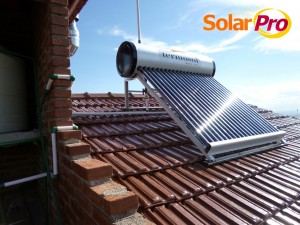The Sun shines 1000 MW per square kilometer on the earth's surface.
Not quite. A clear day you can get about 1kW/m
2 on a surface
perpendicular to the direction towards the sun, but not the surface of the earth (which often isn't perpendicular to the sun).
Outside the atmosphere sunlight have a fairly constant power of ~1.362 kW/m². About 26% of that is lost because of the atmosphere which leaves ~1 kW/m
2 on a clear day. Clouds reflect on average ~20%. The area of a sphere is 4πr
2 and the earths cross section towards the sun is a disk with area πr
2, so on average you get 1/4 the power per surface area. In total the average is about 1.362*0.54*0.25 =
184 W/m2. However it depends a lot on the location, as can be seen in the plots above. Near the equator you get much higher average insolation, closer to 300 W/m
2. In northern Europe you unfortunately only get about 100 w/m
2. Still a respectable amount, but one has to remember that it is the yearly average, it will vary a lot with time of year and weather conditions. During winter (when energy demand is highest) production from solar drops to almost nothing this far to the north. Conversely, if you live in a warm climate near the equator, you might have higher energy demand during peak insolation because people use airconditioning to cool their buildings.
[/quote]
Agreed. Sun power varies with location, time of the year, time of day, and weather conditions.
The 1 kW/m
2 is often cited. Is it incorrect, or it's reasonable in certain conditions, like when panels are installed at an angle, so that they're perpendicular to the rays of the Sun?
As you said, there are deserts out there that are ideal for solar power, but to make the best use of them to power all latitudes would require an international grid, which would have it's technical challenges, and sadly, still bigger political challenges. In fact, if the grid is large enough, then storage would be less of an issue, because the sun is always shining somewhere, and there is always peak demand somewhere and valley demand elsewhere. But yeah, not the easiest thing to do.
But, if you have hydro and solar/wind, you don't need to use as much water when solar/wind is supplying the demand, at least partially. That could be considered some kind of energy storage, specially if the hydro can supply the demand when solar/wind is low, thanks to the fact that now you don't use as much water when the sun is shining and/or the wind is blowing.
Why do you say that solar isn't good for heating? There are some solar water heaters, and they say that they reduce a lot of the gas needed to heat the water:

When i traveled to some provinces in the north of my country, you see them everywhere. And i've seen some of them even here in Buenos Aires.